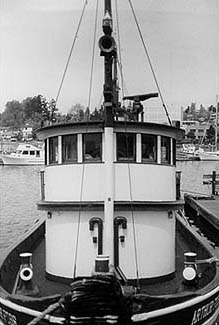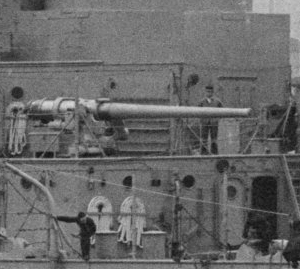|
Northwest Seaport
Northwest Seaport Maritime Heritage Center is a nonprofit organization in Seattle, Washington dedicated to the preservation and interpretation of Puget Sound and Northwest Coast maritime heritage, expressed through educational programs and experiences available to the public aboard its ships. The organization owns three large historic vessels docked at the Historic Ships' Wharf in Seattle's Lake Union Park; the tugboat ''Arthur Foss'' (1889), Lightship 83 Swiftsure (1904), and the halibut fishing schooner ''Tordenskjold'' (1911). These vessels are used as platforms for a variety of public programs, ranging from tours and festivals to restoration workshops and vocational training. Northwest Seaport is adjacent to the Center for Wooden Boats and the Museum of History and Industry on the south shore of Lake Union in downtown Seattle. These organizations have partnered in many public programs and events at Lake Union Park but are not affiliated with each other. Northwest Seaport als ... [...More Info...] [...Related Items...] OR: [Wikipedia] [Google] [Baidu] |
Northwest Seaport Alliance
The Northwest Seaport Alliance is a port authority based in the Puget Sound region of the United States, comprising the seaports of Seattle and Tacoma in Washington state. The combined port authority is the third largest cargo port in the United States and by container volume. The two seaports, which had been rivals for most of the 20th century but lost ground to nearby ports in British Columbia, proposed a merger of marine cargo operations in 2014. A public development authority was created in 2015 and approved by the Federal Maritime Commission, resulting in the formation of The Northwest Seaport Alliance on August 4, 2015. History Background In 1911, the Washington State Legislature authorized the creation of port districts through public referendums. The ports of Seattle and Tacoma were formed separately in 1911 and 1918, respectively, to establish public control of municipal waterfronts. The two ports, located apart, facilitated exports of the state's natural resourc ... [...More Info...] [...Related Items...] OR: [Wikipedia] [Google] [Baidu] |
Inside Passage
The Inside Passage (french: Passage Intérieur) is a coastal route for ships and boats along a network of passages which weave through the islands on the Pacific Northwest coast of the North American Fjordland. The route extends from southeastern Alaska in the United States, through western British Columbia in Canada, to northwestern Washington state in the United States. Ships using the route can avoid some of the bad weather in the open ocean and may visit some of the many isolated communities along the route. The Inside Passage is heavily travelled by cruise ships, freighters, tugs with tows, fishing craft, pleasure craft, and ships of the Alaska Marine Highway, BC Ferries, and Washington State Ferries systems. Coast Guard vessels of both Canada and the United States patrol and transit in the Passage. The term "Inside Passage" is also often used to refer to the ocean and islands around the passage itself. Route It is generally accepted that the southernmost point of th ... [...More Info...] [...Related Items...] OR: [Wikipedia] [Google] [Baidu] |
Blunts Reef
Blunts is a hamlet southeast of Quethiock in the civil parish of Quethiock in east Cornwall, England, United Kingdom. It is situated west of the River Lynher valley about 5 miles (8 km) north-west of Saltash on the road from Quethiock village to Landrake. The meaning of Blunts is "Blunt family's workshop".Weatherhill, Craig Craig Weatherhill (1950 or 1951 – 18 or 19 July 2020) was a Cornish antiquarian, novelist and writer on the history, archaeology, place names and mythology of Cornwall. Weatherhill attended school in Falmouth, where his parents ran a sport ... (2009). ''A Concise Dictionary of Cornish Place-Names''. Westport, Co. Mayo: Evertype. . p. 21. The hamlet has a Methodist chapel (formerly Bible Christian), a garage, and a women's institute. References Hamlets in Cornwall {{Caradon-geo-stub ... [...More Info...] [...Related Items...] OR: [Wikipedia] [Google] [Baidu] |
South America
South America is a continent entirely in the Western Hemisphere and mostly in the Southern Hemisphere, with a relatively small portion in the Northern Hemisphere at the northern tip of the continent. It can also be described as the southern Subregion#Americas, subregion of a single continent called Americas, America. South America is bordered on the west by the Pacific Ocean and on the north and east by the Atlantic Ocean; North America and the Caribbean Sea lie to the northwest. The continent generally includes twelve sovereign states: Argentina, Bolivia, Brazil, Chile, Colombia, Ecuador, Guyana, Paraguay, Peru, Suriname, Uruguay, and Venezuela; two dependent territory, dependent territories: the Falkland Islands and South Georgia and the South Sandwich Islands; and one administrative division, internal territory: French Guiana. In addition, the ABC islands (Leeward Antilles), ABC islands of the Kingdom of the Netherlands, Ascension Island (dependency of Saint Helena, Asce ... [...More Info...] [...Related Items...] OR: [Wikipedia] [Google] [Baidu] |
Camden, New Jersey
Camden is a city in and the county seat of Camden County, in the U.S. state of New Jersey. Camden is part of the Delaware Valley metropolitan area and is located directly across the Delaware River from Philadelphia, Pennsylvania. At the 2020 U.S. census, the city had a population of 71,791.Camden city, Camden County, New Jersey United States Census Bureau. Accessed April 26, 2022. The Census Bureau's |
Lightvessel
A lightvessel, or lightship, is a ship that acts as a lighthouse. They are used in waters that are too deep or otherwise unsuitable for lighthouse construction. Although some records exist of fire beacons being placed on ships in Roman times, the first modern lightvessel was off the Nore sandbank at the mouth of the River Thames in England, placed there by its inventor Robert Hamblin in 1734. The type has become largely obsolete; lighthouses replaced some stations as the construction techniques for lighthouses advanced, while large, automated buoys replaced others. Construction A crucial element of lightvessel design is the mounting of a light on a sufficiently tall mast. Initially, it consisted of oil lamps that could be run up the mast and lowered for servicing. Later vessels carried fixed lamps which were serviced in place. Fresnel lenses were used as they became available, and many vessels housed them in small versions of the lanterns used in lighthouses. Some lightshi ... [...More Info...] [...Related Items...] OR: [Wikipedia] [Google] [Baidu] |
National Historic Landmark
A National Historic Landmark (NHL) is a building, district, object, site, or structure that is officially recognized by the United States government for its outstanding historical significance. Only some 2,500 (~3%) of over 90,000 places listed on the country's National Register of Historic Places are recognized as National Historic Landmarks. A National Historic Landmark District may include contributing properties that are buildings, structures, sites or objects, and it may include non-contributing properties. Contributing properties may or may not also be separately listed. Creation of the program Prior to 1935, efforts to preserve cultural heritage of national importance were made by piecemeal efforts of the United States Congress. In 1935, Congress passed the Historic Sites Act, which authorized the Interior Secretary authority to formally record and organize historic properties, and to designate properties as having "national historical significance", and gave the Nati ... [...More Info...] [...Related Items...] OR: [Wikipedia] [Google] [Baidu] |
Foss Maritime
Foss Maritime (formerly Foss Launch and Tug Company), is an American tugging company. The company was founded in 1889 by Thea Foss (1857–1927) and her husband Andrew Foss. The company is now the largest tug and towing concern on the west coast of the United States. On July 2, 2013, Foss Marine Holdings announced that (effective at that date) it would merge all of its operations and resources under a single name: 'Foss Maritime Company'. Founding and early years The Foss concern began in 1889 with a single rowboat which Thea Foss rented by the day in Tacoma while her husband Andrew, a builder, was working on a construction project. At the end of the building, the Fosses realized that Thea's boat had made them more money than Andrew's carpentry. They acquired more boats and soon began operating larger vessels, branching out into sailboats, naptha launches, gasoline-engined vessels, and scows and barges. By 1916 Foss Launch and Tug Company bought Captain O.G. Olson's Tacoma to ... [...More Info...] [...Related Items...] OR: [Wikipedia] [Google] [Baidu] |
Foss Launch And Tug
Foss Maritime (formerly Foss Launch and Tug Company), is an American tugging company. The company was founded in 1889 by Thea Foss (1857–1927) and her husband Andrew Foss. The company is now the largest tug and towing concern on the west coast of the United States. On July 2, 2013, Foss Marine Holdings announced that (effective at that date) it would merge all of its operations and resources under a single name: 'Foss Maritime Company'. Founding and early years The Foss concern began in 1889 with a single rowboat which Thea Foss rented by the day in Tacoma while her husband Andrew, a builder, was working on a construction project. At the end of the building, the Fosses realized that Thea's boat had made them more money than Andrew's carpentry. They acquired more boats and soon began operating larger vessels, branching out into sailboats, naptha launches, gasoline-engined vessels, and scows and barges. By 1916 Foss Launch and Tug Company bought Captain O.G. Olson's Tacoma towi ... [...More Info...] [...Related Items...] OR: [Wikipedia] [Google] [Baidu] |
Diesel Engine
The diesel engine, named after Rudolf Diesel, is an internal combustion engine in which ignition of the fuel is caused by the elevated temperature of the air in the cylinder due to mechanical compression; thus, the diesel engine is a so-called compression-ignition engine (CI engine). This contrasts with engines using spark plug-ignition of the air-fuel mixture, such as a petrol engine ( gasoline engine) or a gas engine (using a gaseous fuel like natural gas or liquefied petroleum gas). Diesel engines work by compressing only air, or air plus residual combustion gases from the exhaust (known as exhaust gas recirculation (EGR)). Air is inducted into the chamber during the intake stroke, and compressed during the compression stroke. This increases the air temperature inside the cylinder to such a high degree that atomised diesel fuel injected into the combustion chamber ignites. With the fuel being injected into the air just before combustion, the dispersion of the fuel is ... [...More Info...] [...Related Items...] OR: [Wikipedia] [Google] [Baidu] |
Battle Of Wake Island
The Battle of Wake Island was a battle of the Pacific campaign of World War II, fought on Wake Island. The assault began simultaneously with the attack on Pearl Harbor naval and air bases in Hawaii on the morning of 8 December 1941 (7 December in Hawaii), and ended on 23 December, with the surrender of American forces to the Empire of Japan. It was fought on and around the atoll formed by Wake Island and its minor islets of Peale and Wilkes Islands by the air, land, and naval forces of the Japanese Empire against those of the United States, with Marines playing a prominent role on both sides. The island was held by the Japanese for the duration of the Pacific War theater of World War II; the remaining Japanese garrison on the island surrendered to a detachment of United States Marines on 4 September 1945, after the earlier surrender on 2 September 1945 on the battleship in Tokyo Bay to General Douglas MacArthur. Prelude In January 1941, the United States Navy constructed a ... [...More Info...] [...Related Items...] OR: [Wikipedia] [Google] [Baidu] |








